NEW YORK — Partisan political bickering hasn’t helped the aging Hudson River tunnels that carry 200,000 Amtrak riders and NJ Transit commuters to, from, and through Manhattan each day. Last week, two of the protagonists, Gov. Andrew Cuomo (D-New York) and President Donald Trump lowered their swords at a White House lunch, offering some hope the stalled Gateway Tunnels project to construct new river crossings could find a way forward.
It’s a slim hope at best.
Opened for service in 1910 by the Pennsylvania Railroad, the twin tubes see 450 weekday trains and operate at peak capacity during high-traffic periods. When something goes wrong, cross-Hudson commuters and Northeast Corridor passengers are in a world of hurt.
In 2012, Superstorm Sandy flooded the 14,000-foot long tunnels, severing rail service for five days. The effects of that hurricane are still seen today.
Cuomo led reporters on a tour of one of the tubes in October, six years after the devastation left by Sandy. [See “In bid for funds, New York governor leads tour of aging Hudson tunnels,” Trains News Wire, Oct. 19, 2018.] Saltwater had inundated the tunnels, submerging electric cables and equipment. Salt residue left after the water was pumped out continues to corrode the concrete tunnel lining and copper wiring. Rebar within the walls is deteriorating. Chunks of cement occasionally fall from the ceiling.
“It is only a matter of time before we have a serious mishap in one of those tunnels where we lose use of one of those tunnels,” Cuomo says.
There once was a plan to build a new tunnel, and it predated the Sandy disaster.
Known as the ARC project, short for Access to the Region’s Core, studies, plans, and environmental reviews consumed 14 years from 1995 to 2009. Tunnel construction began in May of 2010, with funding promised from the federal government, the Port Authority of New York and New Jersey, and the New Jersey Turnpike Authority.
But the plan, which included a new station solely for NJ Transit trains adjacent to New York Penn Station, was put together without the involvement of either Amtrak or New York state. Five months into construction, then-New Jersey Gov. Chris Christie canceled the project, citing potential cost overruns.
By then, more than $600 million had already been spent. New Jersey had to repay $95 million to the U.S. Department of Transportation and forfeited $3 billion in funds awarded under the New Starts program.
Amtrak picked up the ball the following year with a budget request calling for two new tunnels and reconstruction of the line from Newark to Penn Station, setting the price tag at $13.5 billion.
An agreement was reached in 2015 among the two states, Amtrak, and DOT to split the cost, with the federal government kicking in half and New Jersey and New York each ponying up 25 percent. The deal envisioned federal funds coming from “a combination of New Starts grant dollars, Amtrak Northeast Corridor profits, Amtrak capital funds, annual appropriations, and other similar federal sources,” according to a press release issued at the time by New York Sen. Charles Schumer.
That deal was struck under the transit-friendly Obama administration. But two months after Trump took office, he directed DOT to restrict New Starts grants to those projects with pre-existing full funding agreements only. That effectively cut out the Gateway program.
Soon, DOT was calling into question the 2015 agreement. “There is no such agreement,” wrote Jane Williams, acting administrator of the Federal Transit Administration, in a letter to New York. “We consider it unhelpful to reference a non-existent ‘agreement’ rather than directly address the responsibility for funding a local project where 9 out of 10 passengers are local transit riders.”
The project appeared doomed earlier this year when Trump threatened a government shutdown if an omnibus spending bill included funding for Gateway. It didn’t, at least by name.
Then in October, Cuomo reached out to the president, sending the White House a video from his tunnel tour. The governor was invited to lunch, joined by Transportation Secretary Elaine Chao and Chief of Staff John Kelly. Over a plate of shrimp and beef, Cuomo and Trump talked construction.
“The president got it,” Cuomo says. “He had a surprising amount of knowledge about the infrastructure projects that we’re doing in New York. Again, he has a development, construction background, so he knows these issues and he knows the questions of process and bidding and making sure the exposure is what everybody expects.”
Trump told the New York Post, “I have a good relationship with him,” referring to Cuomo. “I like him. He likes me.” The president also told reporters, “We’re going to look at it.”
While some took that as a hopeful sign, the optimism overlooks one key fact. “Trump doesn’t have a discretionary funding pot that he can just use however he wishes,” says Yonah Freemark, who studies transportation and politics at the Massachusetts Institute of Technology.
Freemark explains that because there are limited dollars in the New Starts program, which is generally appropriated at about $2.3 billion each year, any action by the administration to give priority to the Gateway project will come at the expense of other transit projects.
Moreover, the scale of the total Gateway project is beyond the ability of these FTA grants if the federal commitment reaches the hoped-for 50 percent contribution. Amtrak estimates the cost of the full project, which includes replacing the Portal bridges, expansion of Penn Station, increasing the main line to four tracks from Newark to Manhattan, and other upgrades, at $30 billion.
“Simply the scale and cost of Gateway suggests that this may require congressional allocations of a new amount of funding to pay for the project,” Freemark tells Trains News Wire.
Democrats and Republicans alike have called for massive infrastructure spending. Freemark sees this as an opportunity: “What the states of New York and New Jersey need to be doing is asking their Congress people to make more of an effort to put the project on the congressional agenda and add it to a funding package.”
Cuomo discussed establishing a corporation with representatives from New York, New Jersey and the federal government running it. “I don’t believe Amtrak is the best vehicle to manage this project,” he told Trump. “Amtrak is in the train operation business. That is a different business than the tunnel-boring business.”
Cuomo said that the corporation would get bids from the private sector “so we know what we’re really talking about in terms of financial exposure.” It would be a public/private partnership, with government developing the master plan and the private sector making it happen.
Amtrak responded with a statement to the Wall Street Journal from Chief Commercial Officer Stephen Gardner: “As owner and steward of the Northeast Corridor, Amtrak will always remain involved in all aspects of Gateway for the benefit of the region and the nation.
Cuomo describes the new tunnels as an urgent need, with the longest lead time for construction and the greatest risk of disruption from the loss of even one of the existing tunnels.
He also sees it as an issue of national interest. But it will take more than a convivial lunch to get shovels turning.





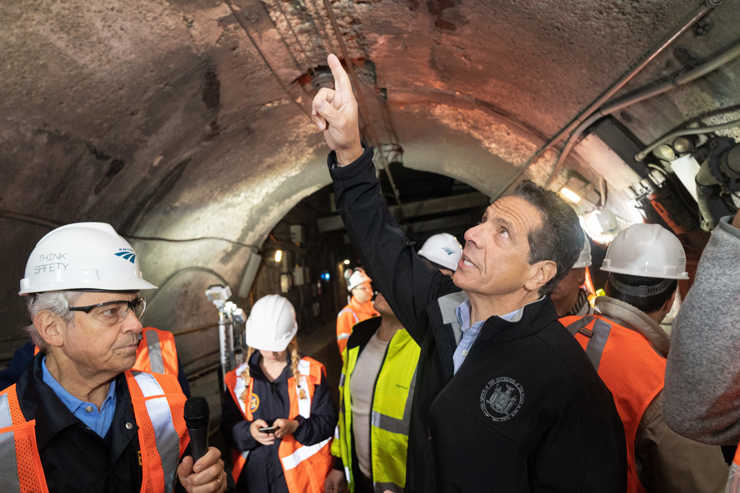


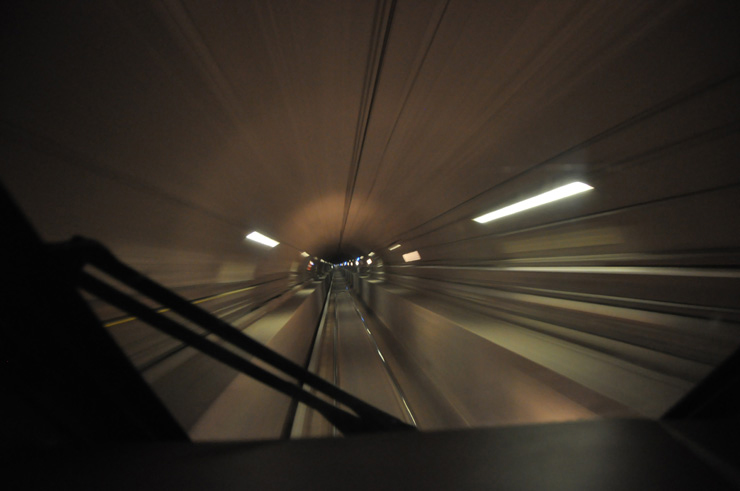

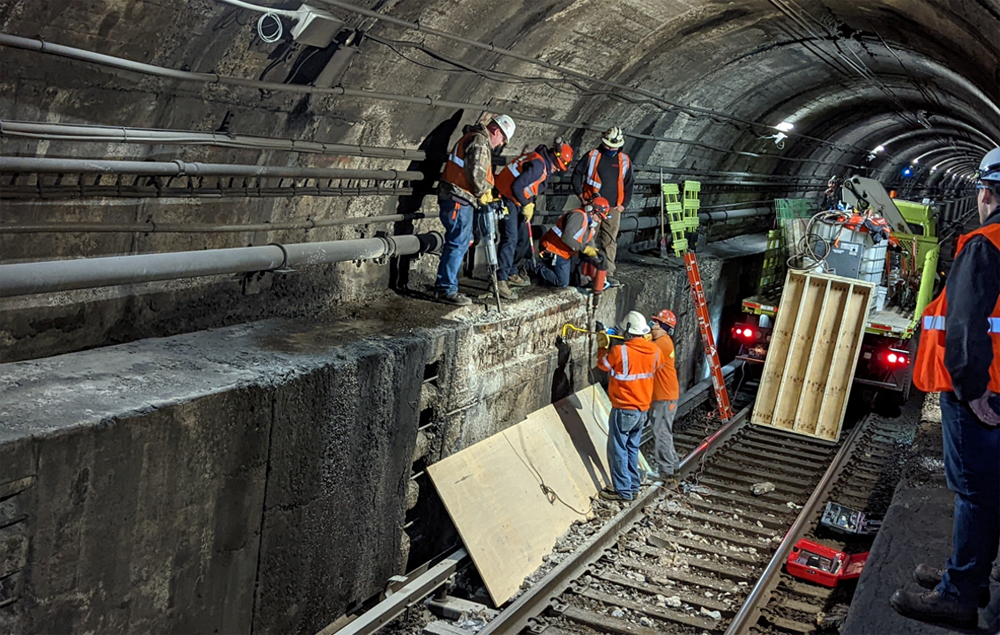
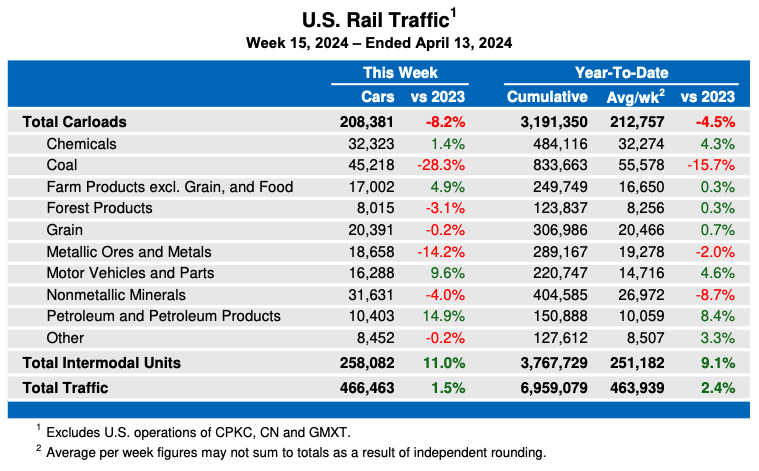
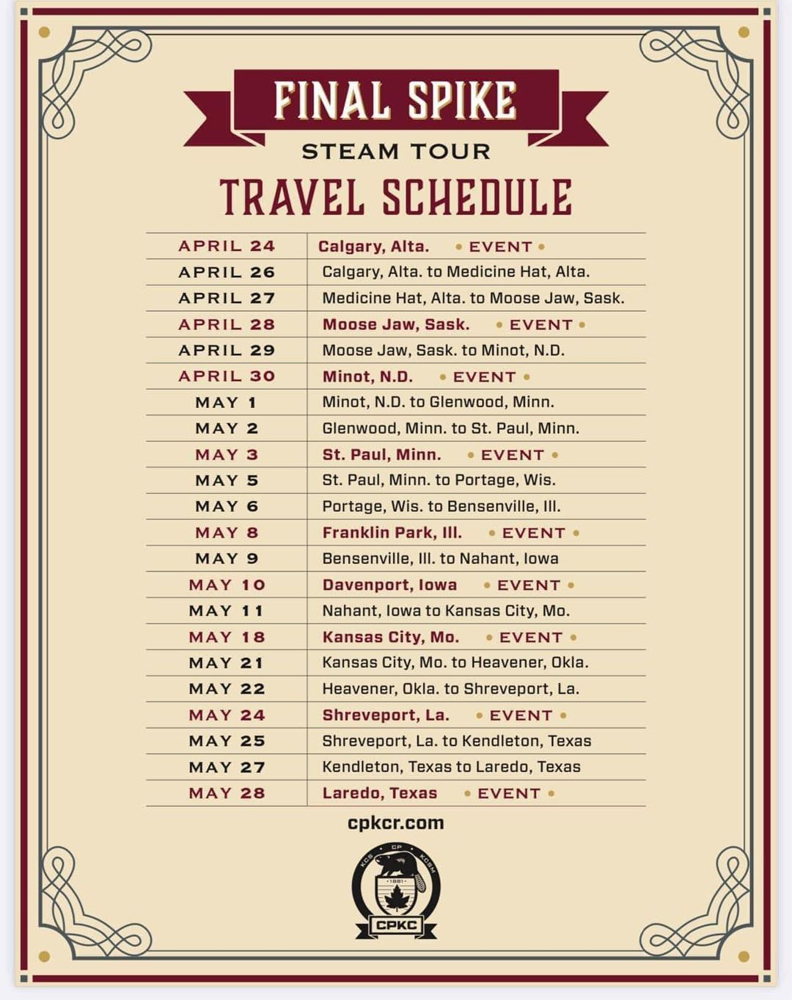
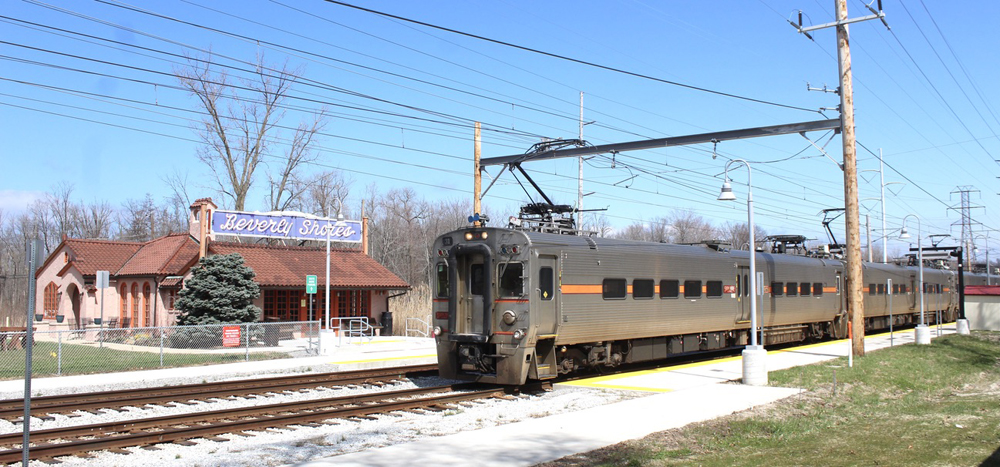




Now here’s an absurd sidebar: today’s NYT (New York Times) has a long article on Mayor DeBlasio’s increasing absences from his City Hall office duties. One way not to deal with problems (tunnels) is to hide. BTW, Pennsylvania Station, like the rest of mid-town, is jammed. The human equivalents of the parking lots the so-called “expressways” become twice daily.
When all is said and done, a lot more will be said than done.
Anna Harding,
The cost of failure would not be just to the Greater New York area, but to the Nation, remember that Wall Street is in New York, and, if I remember, something along the lines of 35 – 45% of the Nations GDP revolves around said region. If both tunnels fail this country would be in a world of hurt, to the tunes of 100’s of billions of dollars PER DAY. The cost for the entire project, even if it reaches $50 Billion is well worth if for the entire country to pay…believe it or not, the Federal budget relies on that region of the country to work in order to survive. Just look at the cost after 9/11, and that was only a for a short time.
George – Sorry if I was unclear. My post was in no way meant to criticize you earlier post. If you took it that way I apologize for my sloppy writing. I should have been more careful in my writing.
Is this a great country, or what?
Charles – Of course you are correct. I referred to whatever understanding executive branch agencies in the administration of former president Obama had or didn’t have with the two states and Amtrak as the Obama “deal.” Sorry if I was unclear.
George — Obama “deal”. The Constitution doesn’t give the president the right to “deal”. Whatever the president decides to do within his legal powers as granted by Congress is fine and dandy but it expires with his term. Mr. Obama’s term end noon on January 20th of last year. After that, Mr. Obama has not been president any more than my grandson is. Whatever understanding Mr. Obama reached with the states is up to the new president to hold to or otherwise, unless acted upon by the Congress.
Let’s call it an even fifteen billion. If one of the existing tunnels fails, what is the impact (and cost) to the greater New York area, and how long would it take for this cost to exceed the cost of the new tunnels? If both existing tunnels fail, what is the cost? Is this cost high enough, and the time it would accrue short enough, that it is reasonable even at a fifteen billion dollar price tag to build new tunnels?
Everything needs maintenance. This is a classic case of pay me now or pay me later.
The above comments are general in nature and do not form the basis for an attorney/client relationship. They do not constitute legal advice. I am not your attorney. Find your own damn lawyer.
The recitation of the history of the project, leading up to the situation today, fails to note, as I’ve posted before, that the 25% – 25% New York – New Jersey share under the previous Obama “deal” looked to the Feds to lend the states their share, in addition to ponying up their own 50%. Maybe if the states had put up real money, the project would have progressed, and those in “flyover” country would have felt better about it.
• Okay I get it.
• …… With so much business in the Northeast it would seem prudent to support that areas need for transit, with Government funds. But what about us in the “fly-over” part of this nation that supports the government by paying taxes.
To me, IMHO, …….NOTHING should be too big to fail. The bailouts of either banks/car companies/etc. are sad.
Us folks here in the middle of the country, if our business fails, we file bankruptcy and someone else picks up the pieces to make a go of it. Why should we pay for someone who mismanaged ANYTHING. That attitude rewards poor leadership.
• ……. Okay again, I get it, politics and money explain it all, but that is why we as a nation have such a huge Federal Debt. endmrw1204180954
The problem is the spirit of compromise has been lost among our legislators. “Flyover America” has needs just as much as the left coast. I am not against the Fed funding its share. But it should be included as part of another TEA bill in Congress which covers national transportation needs, not just regional ones. Then everyone can get aboard to move forward.
When everyone wants everything and would rather go without as long as everyone goes without, then we will always have these issues.
Schumer had agreed in principal with Trump to fund a border wall if it included getting the tunnel funded.
But Schumey backed off when the border wall fell down politically, so he welched on his promise and then blamed Trump for the failure. (LOL)
So it don’t matter how many politicos want to craw through that museum known as the Holland Tunnel and expound on the meaning of failed rebar. If they aren’t willing to give something, they aren’t going to get anything.
It’s the American way.
It’s going to be more than “a serious mishap” if there is a train full of passengers in the tunnel when one of the tunnels fails……..
Why should any president of any political party have a discretionary fund?
Find it funny that since there isn’t a source of 13.5 billion, Amtrak wants to rebuild a lot more, jacking theprice to 30 billion. maye they need to scale it the hell back and prioritize. the station isn’t going to sink into the river…..
Al DiCenso posts “The ball is in Congress’s court.” Yes. That’s exactly where the ball belongs, in “Congress’s court”. Maybe if the coastal states will stop some of their nonsense (this isn’t a political site so I’ll bite my tongue) and support some of what Flyover Country wants, an understanding can be moved forward. As things stand now in NY and NJ, I’m pretty sure my Flyover Country congressman (Jim Sensenbrenner Wisconsin 5th) would want some big changes. If I were in Congress representing 5th Wisconsin CD instead of Mr. Sensenbrenner, I’d tell NY and NJ that I’m 100% in favor of the tunnel being federally funded, starting yesterday, but the vile and corrupt political atmosphere in NY and NJ makes it impossible for me to vote for a single penny.
The governors of those two states are both legally elected and entitled to their political opinions. What they are NOT entitled to is federal funding for a project if they won’t do their part to come to a compromise,
Mr. Marker – You may be right and you may be wrong that NY subsidizes Flyover Country with higher taxes. I don’t know one way or the other so I won’t argue. As far as disproportionately small Senate representation, New York and New Jersey aren’t doing all that badly. New York is only the fourth largest state; the three larger will have 66.7% Republican senators in the new Congress so the Republican power will be legitimately representing larger populations. New Jersey is probably a reasonably average state population wise. I know it’s not in the top seven.
Re:complaints from fly-over country. In general NY and NJ pay way more in taxes to the Feds than they receive in services The south and midwest get more money than they put in. Part of that is greater need and part is a result of the disproportionate power in the Senate.
In general we don’t complain about that discrepancy, except when residents of those states question why they should be paying for something in our area.
Mr. McFarlane, FYI “Wall Street” firms have 100% redundant facilities located throughout North Jersey, ready to go at the throw if a switch, in the event of any calamity which closes down their Manhattan offices. Still, a tunnel collapse would indeed be a major catastrophe. Note also in a post below where the NJ & NY 25/25 portions were to be loaned to them by the Fed; would you like to wager on (1) the likelihood of their ever being repaid, and (2), with NY & NJ politicians running the show, the likelihood of completion on time and on budget? Mr. Trump was smart to walk. The ball in in Congress’s court.
Mister McFarlane:
If what you have just stated is provable and not just hyperbole then a clear case exists for immediate replacement of or augmentation of the existing two tunnels. However, it must be proved not only to the general public (we are not the general public) but to the House of Representatives, in the form of a bill to fund construction of the relief tunnels.
I will stay mute as to whether I believe such a bill, even with proof of the great level of damage as cited to the national economy should the existing tunnels fail, would pass or even be considered under the present government.
I am but a humble housewife in a small mountain town somewhere north of the Mason-Dixon Line. Such issues as the issue of relief tunnels is not for the likes of me but for the Captains of Industry in America, menfolk who have such vision and clarity of purpose the like of which I could never muster.
And now you must excuse me. I’m barefoot and there is lunch to be made.
The above comments are general in nature and do not form the basis for an attorney/client relationship. They do not constitute legal advice. I am not your attorney. Find your own damn mouthpiece.
If the tunnels have issues, they can drive or take the ferry, like they did before the tunnels were built. Highway bridges too crowded, ferries too slow? Sorry. Pay up or shut up. Borrowing your share of funding is a wish sandwich.